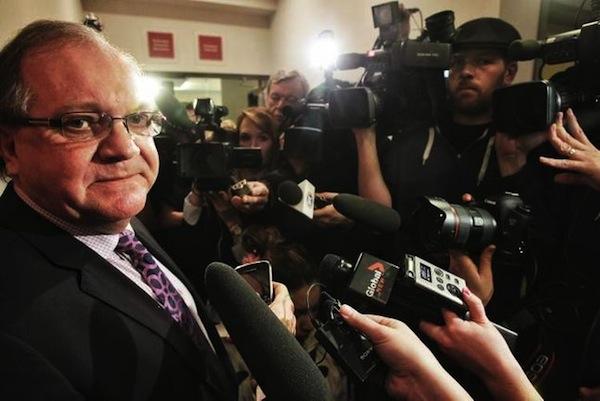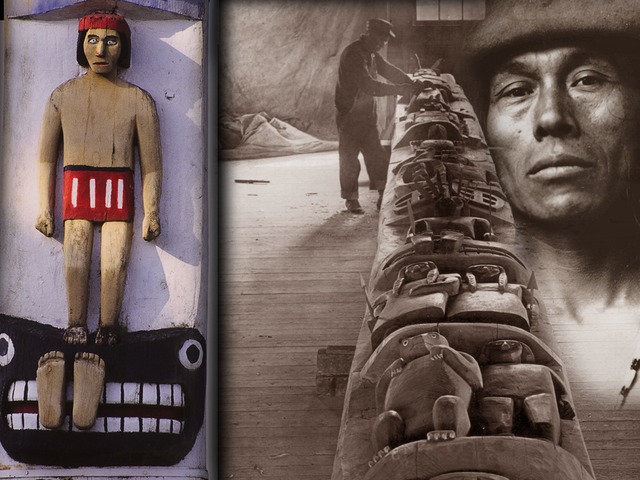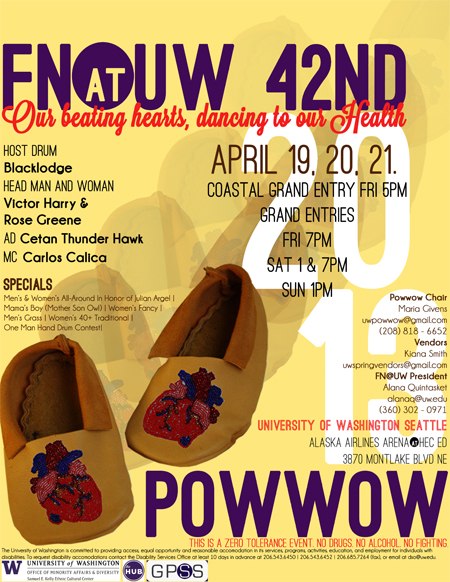Author: Kim Kalliber
Earth Day: The History of A Movement
The height of hippie and flower-child culture in the United States, 1970 brought the death of Jimi Hendrix, the last Beatles album, and Simon & Garfunkel’s “Bridge Over Troubled Water”. Protest was the order of the day, but saving the planet was not the cause. War raged in Vietnam, and students nationwide increasingly opposed it.
At the time, Americans were slurping leaded gas through massive V8 sedans. Industry belched out smoke and sludge with little fear of legal consequences or bad press. Air pollution was commonly accepted as the smell of prosperity. “Environment” was a word that appeared more often in spelling bees than on the evening news. Although mainstream America remained oblivious to environmental concerns, the stage had been set for change by the publication of Rachel Carson’s New York Times bestseller Silent Spring in 1962. The book represented a watershed moment for the modern environmental movement, selling more than 500,000 copies in 24 countries and, up until that moment, more than any other person, Ms. Carson raised public awareness and concern for living organisms, the environment and public health.
Earth Day 1970 capitalized on the emerging consciousness, channeling the energy of the anti-war protest movement and putting environmental concerns front and center.
The idea came to Earth Day founder Gaylord Nelson, then a U.S. Senator from Wisconsin, after witnessing the ravages of the 1969 massive oil spill in Santa Barbara, California. Inspired by the student anti-war movement, he realized that if he could infuse that energy with an emerging public consciousness about air and water pollution, it would force environmental protection onto the national political agenda. Senator Nelson announced the idea for a “national teach-in on the environment” to the national media; persuaded Pete McCloskey, a conservation-minded Republican Congressman, to serve as his co-chair; and recruited Denis Hayes as national coordinator. Hayes built a national staff of 85 to promote events across the land.
As a result, on the 22nd of April, 20 million Americans took to the streets, parks, and auditoriums to demonstrate for a healthy, sustainable environment in massive coast-to-coast rallies. Thousands of colleges and universities organized protests against the deterioration of the environment. Groups that had been fighting against oil spills, polluting factories and power plants, raw sewage, toxic dumps, pesticides, freeways, the loss of wilderness, and the extinction of wildlife suddenly realized they shared common values.
Earth Day 1970 achieved a rare political alignment, enlisting support from Republicans and Democrats, rich and poor, city slickers and farmers, tycoons and labor leaders. The first Earth Day led to the creation of the United States Environmental Protection Agency and the passage of the Clean Air, Clean Water, and Endangered Species Acts. “It was a gamble,” Gaylord recalled, “but it worked.”
As 1990 approached, a group of environmental leaders asked Denis Hayes to organize another big campaign. This time, Earth Day went global, mobilizing 200 million people in 141 countries and lifting environmental issues onto the world stage. Earth Day 1990 gave a huge boost to recycling efforts worldwide and helped pave the way for the 1992 United Nations Earth Summit in Rio de Janeiro. It also prompted President Bill Clinton to award Senator Nelson the Presidential Medal of Freedom (1995) — the highest honor given to civilians in the United States — for his role as Earth Day founder.
As the millennium approached, Hayes agreed to spearhead another campaign, this time focused on global warming and a push for clean energy. With 5,000 environmental groups in a record 184 countries reaching out to hundreds of millions of people, Earth Day 2000 combined the big-picture feistiness of the first Earth Day with the international grassroots activism of Earth Day 1990. It used the Internet to organize activists, but also featured a talking drum chain that traveled from village to village in Gabon, Africa, and hundreds of thousands of people gathered on the National Mall in Washington, DC. Earth Day 2000 sent world leaders the loud and clear message that citizens around the world wanted quick and decisive action on clean energy.
Much like 1970, Earth Day 2010 came at a time of great challenge for the environmental community. Climate change deniers, well-funded oil lobbyists, reticent politicians, a disinterested public, and a divided environmental community all contributed to a strong narrative that overshadowed the cause of progress and change. In spite of the challenge, for its 40th anniversary, Earth Day Network reestablished Earth Day as a powerful focal point around which people could demonstrate their commitment. Earth Day Network brought 225,000 people to the National Mall for a Climate Rally, amassed 40 million environmental service actions toward its 2012 goal of A Billion Acts of Green®, launched an international, 1-million tree planting initiative with Avatar director James Cameron and tripled its online base to over 900,000 community members.
The fight for a clean environment continues in a climate of increasing urgency, as the ravages of climate change become more manifest every day. We invite you to be a part of Earth Day and help write many more victories and successes into our history. Discover energy you didn’t even know you had. Feel it rumble through the grassroots under your feet and the technology at your fingertips. Channel it into building a clean, healthy, diverse world for generations to come.
2013 Allen/Quilceda Watershed Earth Day Celebration
Saturday, April 20 10 a.m. – 2 p.m. Qwuloolt Estuary Restoration Project Site,
Harborview Park, 4700 60th Ave. NE, Marysville, WA 98270
 The first 200 participants get a free Earth Day T-shirt. Visit informational booths and stamp your shirt with all the parts of a healthy watershed. Informational booth topics include water pollution, salmon, the water cycle, native plants, controlling invasive plants and restoration projects.
The first 200 participants get a free Earth Day T-shirt. Visit informational booths and stamp your shirt with all the parts of a healthy watershed. Informational booth topics include water pollution, salmon, the water cycle, native plants, controlling invasive plants and restoration projects.
Plant a native tree or shrub to help restore the Qwuloolt Estuary, then spread mulch to nourish new plants and suppress weeds.
Come prepared for all weather conditions; wear sturdy shoes or boots. Plants, tools, gloves, water and snacks will be provided for volunteers.
Drop in or stay for the whole event. Registration is not required but preferred for groups, to register please CLICK HERE
For more information contact Erin Martin at:
- Email: Erin.Martin@snoco.org
- Phone: (425) 388-3464, Ext. 4661
Directions from I-5:
Take exit 199 east into Marysville, travel east on 4th St NE
Turn Right (south) onto State Ave
Turn Left (east) onto 3rd St for approximately 1.7 miles
Turn Right (west) onto 52nd St NE,
52nd St NE turns south and becomes 60th Ave NE, Harborview Park is on the right (west) side of the street. Find parking in the Harborview neighborhood.
Tulip festival and more best bets for the weekend
Tulips: The fields should be stunning this weekend, so it would be a good time for a trip up to the Skagit Valley Tulip Festival. Read about it in our story here.
Live music: The Hootenanny will play today’s current country hits, leaving the classics behind. Hometown Hootenanny presents “On the Radio,” a tribute to country music on Saturday at the Historic Everett Theatre. Read about it in our story here.
On the stage: “Giselle” will be presented at 5 p.m. Sunday at the Edmonds Center for the Arts. “Giselle,” one of the greatest romantic tragedies in ballet, is being staged by two artistic directors who were both Pacific Northwest Ballet leading artists. Also, the leading male dancer was just promoted to principal dancer at PNB. Read more in our story here.
Carving show: The Quil Ceda Carvers present a show this weekend at the Evergreen State Fairgrounds. The show offers a wide variety of carvings to admire or buy, including masks, totem poles, carousel figurines and clocks. There are also woodcarving demonstrations, classes, a juried show and door prizes. Everyone who attends receives a carving goodie bag. The show is 10 a.m. to 6 p.m. Saturday and 10 a.m. to 4 p.m. Sunday. Donation of $5 requested; children under 12 free.
For spring: The spring version of Kla Ha Ya Days is this weekend. Activities include a street fair on Saturday and Sunday in Snohomish. There will be a chili cook-off Saturday and a barbecue competition Sunday with public sampling each day. There will also be entertainment, a carnival and a beer garden. For more information go to www.klahayadays.com.
Go to tea: The Marysville Historical Society’s Spring Tea and Vintage Fashion Show is from 12:30 to 4 p.m. Sunday at the Tulalip Resort Hotel. Admission is by registration only. Seats are $25 each. The best way to register at this late date is to call Ken Cage, historical society president, at 425-308-8707 or society treasurer Meg Engelter at 425-314-3706.
Make flowers: Kids and teens ages 9 and up can make beautiful and intricate crepe paper flowers on Sunday at 2 p.m. at the Everett Public Library Evergreen branch. Each participant will receive supplies for three flowers, limited to first 25 children. Get more information here.
Learn about crows: Corvid expert and professor John Marzluff will talk about his 2012 book “Gifts of the Crow.” Marzluff says that crows and other corvids have large brains, which allow them to have complex emotions, think, plan, and reconsider their actions. The event is at 2 p.m. at the Everett Public Library main branch. Get more information here.
42nd Annual First Nations at The University of Washington Spring Powwow, April 19-21
Financial Transparency Legislation Renews Controversy Over First Nation Chiefs’ Salaries

MIKE DEAL/WINNIPEG FREE PRESS
Aboriginal Affairs and Northern Development Minister Bernard Valcourt addresses reporters.
Read more at http://indiancountrytodaymedianetwork.com/2013/04/18/financial-transparency-legislation-renews-controversy-over-chiefs-salaries-148898
By David P. Ball, Indian Country Today Media Network
Newly enacted federal legislation forcing First Nations to disclose their leaders’ salaries and spending online has been decried by critics who say the public is being misled by “myth” and stereotypes.
On Wednesday March 27 in Winnipeg, Aboriginal Affairs and Northern Development Minister Bernard Valcourt attempted to announce that the First Nations Financial Accountability Act, known as Bill C-27, had received royal assent and become law. But advocates say that accountability already exists, and the Conservatives’ real purpose is to demonize Natives as corrupt and incapable of managing themselves.
Demonstrators cut short Valcourt’s press conference, one of them drowning out a speech by aboriginal advocate Phyllis Sutherland by beating a hand drum while shouting “Oppressors!” as she and the minister were ushered into a back room. Sutherland, an outspoken critic of her Manitoba band’s leadership—her chief reportedly earned $206,381 in 2009—brought the salaries of some First Nation chiefs to national media attention three years ago when she leaked the information to the right-leaning Canadian Taxpayers Federation (CTF). The federation launched an ardent campaign for transparency legislation by releasing data suggesting that dozens of chiefs earned more than the country’s Prime Minister and provincial premiers. Highest paid was the chief of Glooscap First Nation in Nova Scotia, population 304, who reportedly earned $978,468.
But aboriginal critics tore apart the federation’s method of comparing First Nations and Canadian politicians’ salaries. The organization included travel reimbursements for Natives but not Members of Parliament, for instance, and also inflated aboriginal incomes—which, under treaties, are not taxed on reserves—in order to compare them with Canadian politicians’ taxed salaries, a tactic that nearly doubled the leaders’ salaries in some cases.
“As far as I’m concerned, people have a right to know what their chief and councils are making and what their band finances are being spent on,” Sutherland, of Peguis First Nation in Manitoba, told Indian Country Today Media Network. “Where is all this money? Why didn’t they do anything for the people? There’s certainly no benefit to the people out there.”
Sutherland said her goal was to end alleged mismanagement and secrecy, especially as many Natives suffer from substandard housing and education.
“In every First Nations reserve I talk with, it’s always the same story: widespread corruption among leaders,” she said. “Not all of them. There are some First Nations doing wonderful things for their people. But I can’t see the problem with them having to post their salaries, honorariums and remuneration. It should be automatic.”
Pam Palmater, chair of Ryerson University’s Indigenous Governance program and runner-up in last year’s election for National Chief of the Assembly of First Nations (AFN), says information on band finances already is provided to Aboriginal Affairs. Reserves must fill out 163 spending reports a year, she said, quoting AFN reports. On average, she added, chiefs actually make about $36,000—less than 80 percent of average per capita earnings in Canada.
“The financial information already is transparent,” Palmater told reporters. “That’s the myth that’s being perpetuated by this legislation. First Nations don’t get a single cent unless they submit audited financial statements. More than audited financial statements: On average they have to submit one report every three days.”
The AFN also opposed the legislation, saying that there are other ways to improve accountability on reserves without extending federal control over bands.
“First Nations have been clear in their commitment to accountability and transparency to all of our citizens,” said AFN National Chief Shawn A-in-chut Atleo. “Bill C-27 would not support this accountability, but instead gives more power to the Minister of Aboriginal Affairs and Northern Development. We do not support unilateralism that further entrenches us in a system that doesn’t work for our people or Canada. The answers lie in our communities and with our citizens, not with more control from Ottawa.”
Valcourt told reporters on March 27 that C-27 represents “an important step” toward First Nations’ self-sufficiency, and would help assure outside investors their money is well managed.
“In our quest for self-sufficiency and economic development, we have a whole youth there that is waiting [for] training and getting the skills they need to get the jobs that are available and can be available for them,” he said. “Investors need the assurance there is accountability and transparency. That’s why I believe this is an important step for First Nations all across Canada.”
Read more at http://indiancountrytodaymedianetwork.com/2013/04/18/financial-transparency-legislation-renews-controversy-over-chiefs-salaries-148898
‘American Buffalo’ Opens at National Museum of Wildlife Art
Source: Indian Country Today Media Network
Before you head to Yellowstone National Park this summer to see the real deal, stop at the National Museum of Wildlife Art in Jackson Hole, Wyoming, to see stunning paintings of bison from the early 18th Century.
The exhibit “George Catlin’s American Buffalo” opens May 18 and runs until August 18, featuring 40 paintings by the artist, who produced about 500 works based on the travels among 50 Native tribes in the 1830s, according to the museum. The show takes a “fresh look at the famous works of [Catlin] through the lens of his representation of buffalo and their integration into the lives of Native Americans.”

“Catlin’s paintings illuminate in great detail the close ties between Native American tribes and bison in the 1830s, and his writings about the land and its native inhabitants have informed generations of conservationists as they wrestle with sustainable ways to manage America’s Great Plains,” said Adam Duncan Harris, curator of art for the National Museum of Wildlife Art, in a press release.

The exhibition, organized by the Smithsonian American Art Museum in collaboration with the National Museum of Wildlife Art, is drawn entirely from the Smithsonian American Art Museum’s collection. For more info on “George Catlin’s American Buffalo” and the National Museum of Wildlife Art, click here.
Read more at http://indiancountrytodaymedianetwork.com/2013/04/18/american-buffalo-opens-national-museum-wildlife-art-148861
Tulalip/Quil Ceda Elementary Book Fair, May 20-24
The Book Fair at Tulalip/Quil Ceda Elementary will be held May 20-24.
Learn more at the Book Fair website: www.bookfairs.scholastic.com
Wisdom of the Elders Celebrates 20 Year of Good Works
Wisdom of the Elders is celebrating its 20 year anniversary on April 19, 2013
“The Life of William Shelton, a Tulalip Indian” Documentary on Kickstarter

“The Life of William Shelton, a Tulalip Indian” documentary, which recently took first place for “Best Overall Film” at the Tulalip Hibulb Film Festival is now on Kickstarter. The film, produced by Lita Sheldon, Tulalip tribal member and Jeff Boice, is working to raise money to create a broadcast quality film that can be aired on TV stations and small independent theaters, along with raising funding for additional interviews, footage and to cover the cost of editing, post production and securing distribution rights.
Kickstarter is an online site home to everything creative, including films, games, music, art, design and more. All of the projects on Kickstarter are brought to life through the direct support of people willing to pledge money and show their support. “The Life of William Shelton, a Tulalip Indian” currently has 42 days to raise their goal of $30,000.
You can read about the project, the people behind it and the various items you can receive depending on your donations here.











